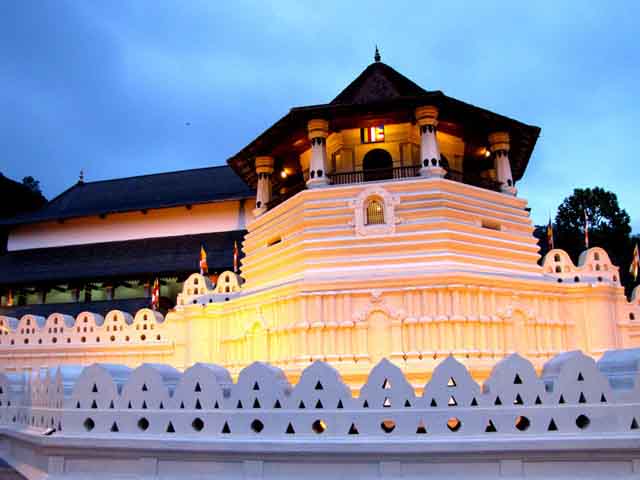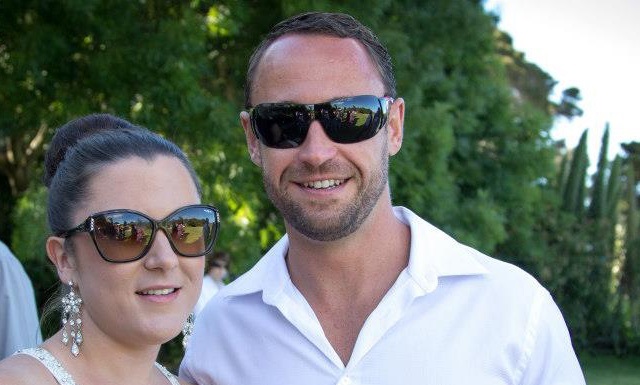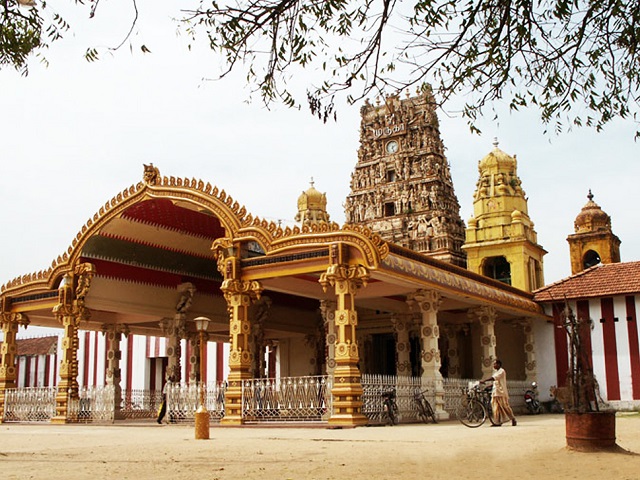
Jaffna
Situated in the peninsula of Jaffna, Jaffna city is Sri Lanka’s northernmost city and has always been a fascination to travelers. Due to 30 years of civil war it was a closed destination to many and is now open to locals and foreigners to discover and explore this unique land. Jaffna is certainly the centre of the vibrant Tamil culture in Sri Lanka and is blended with the colonial charm from the past.
A strong attraction of Jaffna is Nallur Kovil, one of the most significant Hindu temples on the island. Its pooja ceremonies are colourful and musical and on special occasions they are extra vivacious. The Dutch Fort of Jaffna built by Dutch colonialists is a perfect place to view the Jaffna lagoon. Other notable landmarks include the Jaffna Library and the Jaffna market. Cuisines of Jaffna are famed for their scrumptious tastes and flavours.
Some of the most famous dishes are a fusion of seafood and explosion of spices, such as crab and prawn curries. Mangoes and palmyra sweets are in abundance in the region. When in Jaffna, you can visit Pont Pedro, the northernmost point in Sri Lanka. Don’t forget to take a dip in the Keerimalai mineral water spring known to have curative properties. The springs are separated from the sea by a wall of stone steps. Casurina beach, called by many the best beach on the Jaffna peninsula is well worth a visit to enjoy its deep blue water and gentle waves.
Islands of Jaffna are another reason to visit the peninsula. On the Mandaitivu Island you can watch crabs, prawns and fish being caught by fishermen while enjoying some stunning views. On Nainativu Island you find the Nagadipa Vihara, a Buddhist temple of antiquity that was one of the three places in Sri Lanka which Buddha was known to have visited. On Delft Island, watch the wild ponies that were introduced by the Dutch and visit a 1000 year old ancient temple built by the Chola Dynasty and the ruins of a Dutch colonial fort.
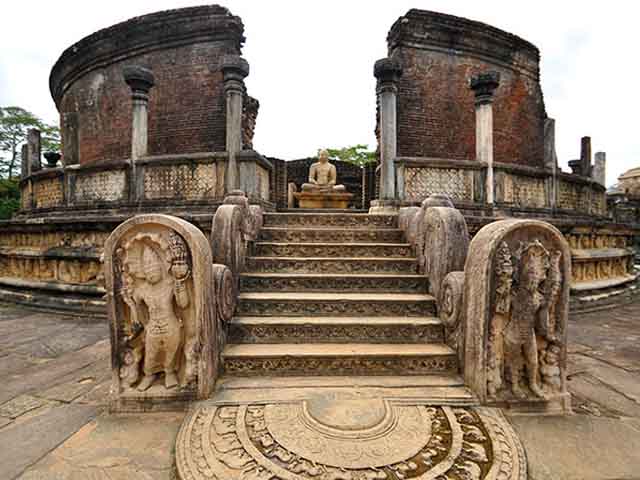
Anuradhapura
Classified as one of the greatest civilization of its kind, Anuradhapura, founded around 5th century BC, was Sri Lanka’s first ancient kingdom and capital. Now a UNESCO World Heritage site, it is the island’s most important ancient city, dotted with ancient monuments, sacred stupas, ruins of temples and palaces, and a network of stunning irrigation lakes and reservoirs.
It is also home to the oldest historically authenticated tree in the world – Sri Maha Bodhi which resulted from a branch from the sacred fig tree under which Lord Buddha is said to have attained enlightenment in Nothern India. This tree is currently over 2200 years old. It was brought to Sri Lanka in the 3rd century BC by the daughter of Emperor Asoka, Sanghamitta. Until the capital’s abandonment in 993 after a South Indian invasion, the city flourished for 1,300 years.
Anuradhapura is home to some of the tallest historical monuments in the world, such as Abhayagiri, Jetavana and Ruwanweli. The oldest stupa on the island, Thuparama is enshrined with the collar bone relic of Buddha. The network of highly sophisticated gigantic irrigation lakes still supplies water to paddy cultivations across the province. Tissa Wewa, Abhaya Wewa and Nuwara Wewa constructed by ancient engineers display clever hydraulic feats of this era. Monolithic sculptures of the area such as Avukana, Isurumuniya rock temple, Kuttam Pokuna and stone pillars of Brazan Palace, which was once home to 1000 Buddhist monks are places well worth the visit.
Mihintale, often cited as the cradle of Buddhism was where Buddhism was first established in Sri Lanka with royal patronage. This is where Emperor Asoka’s son Mahinda, first preached Buddhism to then King Devanampiyatissa, the event which saw Sri Lanka embracing Buddhism as the state religion. Featuring ancient hospitals, ponds, and temples, it is another significant place that belongs to the antiquity of Anuradhapura.
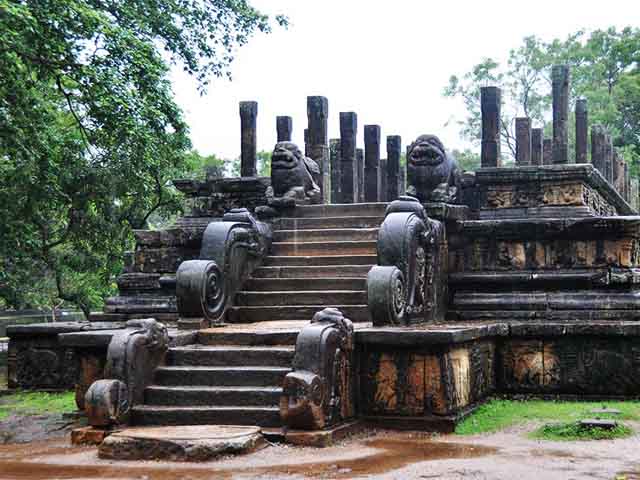
Polonnaruwa
Polonnaruwa became the 2nd Kingdom Capital of Sri Lanka after the fall of Anuradhapura in 993 AD. It is a city of monumental ruins, Brahamanic legacy of the Cholas and the magnificent garden city created by Parakramabahu I in 12th century.
Another important UNESCO World Heritage Site on the island, it served as the capital of Sri Lanka from 11th century to 13th century.
The city bears witness to the civilization Cholas built after their conquest and the astounding legacy created by Sinhala kings thereafter.
Flourished in an epoch when Buddhist arts and architecture were taking centre stage, it is home to some of the most notable ancient structures, monolithic sculptures and stone carvings.
Gigantic rock sculptures of Gal Vihara, the colossal image of Buddha at Lankathilaka, 13th century paintings depicting the life of Buddha at Thivanka Pilimage, Polonnaruwa Vatadage, Madirigiriya Vatadage and the ancient Rankoth Vehera stupa are some of the notable structures still standing superior. King Parakramabahu’s triple-walled garden-city with palaces and sanctuaries is a stunning historic urban creation. The quadrangle at the heart of the city was the centrepiece and sacred precinct of ancient Polonnaruwa. It contains perhaps the most ornate buildings in Sri Lanka, the Polonnaruwa Vatadage. The circular shrine’s ornate carvings, its moonstones and guardstones attract many visitors.
The massive reservoir constructed by Parakramabahu I, named Prakrama Samudraya (Sea of Parakrama) is Sri Lanka’s largest ancient reservoir and a stupendous testimony to the ancient irrigation engineering on the island. The area in and around Polonnaruwa is ideal for spotting the Asian elephant. Minneriya and Kaudulla national parks, centred on extensive reservoirs and lakes attract a large number of elephants.
The two parks are linked by the “elephant corridor”, designed to allow the animals to move from one park to the other. The gathering of elephants at the Minneriya National Park is a famous sight.
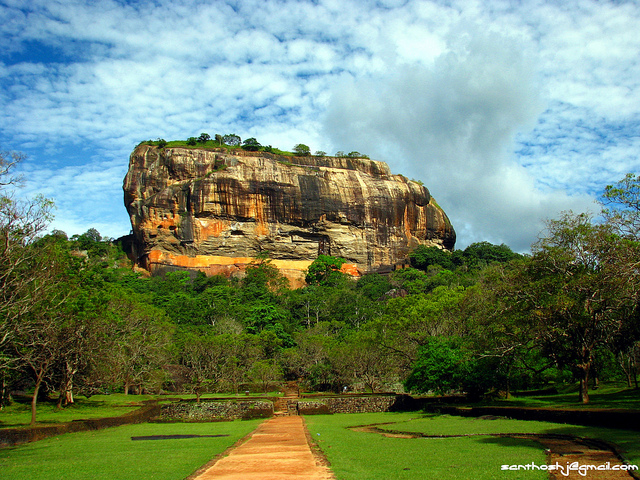
Sigiriya
The ancient fortress of Sigiriya lies on top of a giant granite rock in the North Central Province of Sri Lanka. 180 metres in height, climbing Sigiriya Rock, tops the to-do-list in the region.
Recognised as a UNESCO World Heritage Site, Sigiriya is one of the most extraordinary fortress palaces in the world. Originally used by Buddhist monks as a monastery, the Sigiriya Rock became a fortress, once King Kashyapa, fearing vengeance by the rightful heir to the kingdom, chose to build his palace at the summit making it his capital.
The Rock itself is visually stunning with steep sides and flat summit, standing amidst the jungles surrounding it. The palace built during the 5th century, sitting atop the rock is an engineering marvel of the era. The ingenuity and creativity used in the designs and construction is spectacular.
Sigiriya has roughly 1200 steps and can take from 1.5 to 2.5 hrs to reach the summit. The walk takes you through terraced gardens, a series of moats and boulders. Along the stone stairwell to the top, you encounter the Mirror Wall and the famous Sigiriya rock paintings (frescoes). These paintings have brought universal acclaim to Sigiriya.
The Maidens of the Clouds’; 21 non-identified female figures are compared to the beautiful creations of Ajanta in India. The poems inscribed on the Mirror Wall by ancient visitors to Sigiriya are known as ‘Sigiri graffiti,’ and are among the most ancient texts in the Sinhalese language.
At the mid level terrace is the Lion Gate consisting of the giant lion paws, which were once the entrance to the palace. From here, you can start the final ascent to the summit that holds the upper fortified palace, which has phenomenal views all around and of the symmetrical gardens down below.
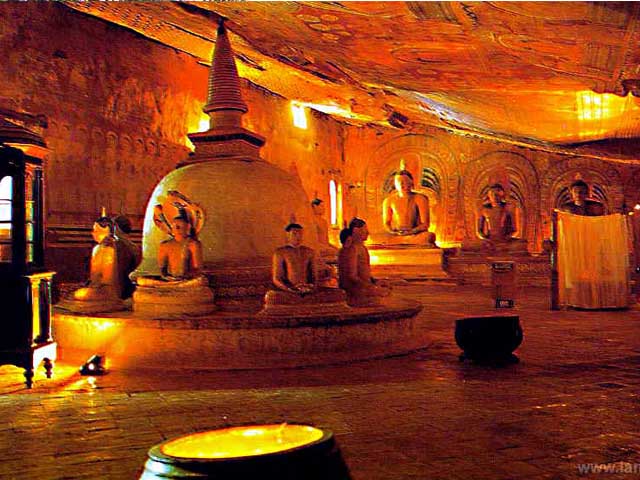
Dambulla
Dambulla, a part of Sri Lanka’s Cultural Triangle is located in the North Central province of the island.
Famous for its cave temple complex, known as the Golden Temple of Dambulla, it is another UNESCO World Heritage site that you must not miss.
The cave temple complex is the largest and the best preserved of its kind in Sri Lanka and is situated within a rock that towers 160 metres over the surrounding plains. A steep 20 minutes of walk will get you to the summit.
Located nearby Sigiriya, from its summit you can even see the famous rock fortress. For over 22 centuries, Dambulla cave temple has been a pilgrim site for Buddhist and has been occupied continuously by monks to this day.
There are 80 caves at the site, but the most important ones are located in five sanctuaries. These contain 150 Buddhist statues of various sizes belonging to different periods. The most spectacular of the caves are the 50m long Maharaja Vihara or the ‘Temple of the Great Kings’. The Devaraja Viharava, houses a 14m long reclining Buddha statue carved out of solid rock.
This temple is the world’s largest painted surface which belongs to antiquity, with intrinsic frescoes and inscriptions that carpet the rock walls and ceilings. The ensemble of caves also contain religious art representing the life of Buddha, battle scenes from stories and elaborate frescoes and inscriptions.
The ideal time to visit Dambulla is at early morning before the rock area gets heated by the sun, as you are not allowed to walk around the caves with your shoes on.

Kandy
This is the second largest city in Sri Lanka and the gateway to the central highlands. Kandy lies amidst the hills of the Kandy plateau. It is surrounded by several mountain ranges including the Knuckles mountain range and the Hanthana Mountain Range. The city has an elevation of 500 metres above the sea level. At the heart of the city is the Kandy Lake next to the world famous Temple of the Tooth. Not only it is one of the most scenic places on the island, it is a UNESCO World Heritage Site with significant religious and cultural importance.
Kandy was the last capital of the ancient Sinhala kingdom which fell under British rule. It holds one of the most sacred items of Buddhist religion, the tooth relic of the Buddha, enshrined in the impressive Temple of the Tooth or Sri Dalada Maligava.
The temple is located in the royal palace complex of Kandy and is located adjacent to the Kandy Lake, built by the last king of Sri Lanka, Sri Vikrama Rajasinha. Every July, the relics and artifacts from the temple are paraded around the city on elephant back in a colourful festival called the EsalaPerahera. This festival is one of the most-watched cultural events in the country. It lasts for more than an hour and is adorned with traditional Kandyan dancers, elephants and one special elephant in charge of the most sacred relic.
The Royal Botanical Gardens in Peradeniya is another lovely attraction in the city of Kandy. The gardens are fashioned after the Royal Gardens in Kew in London. They are the largest botanical gardens in Sri Lanka and have earned a reputation as the finest in Asia.
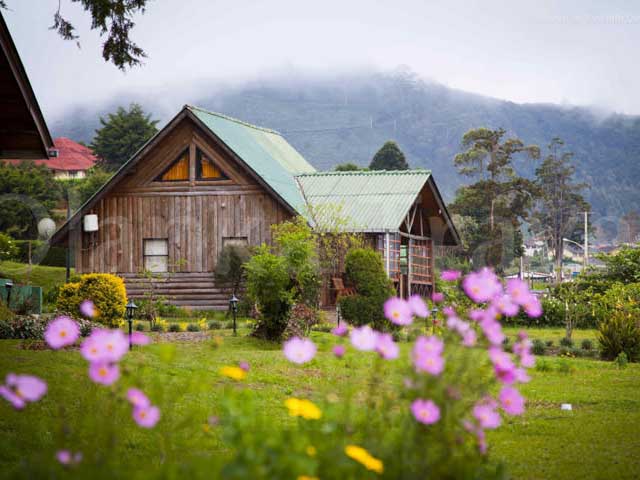
Nuwara Eliya
Nuwara Eliya is the main hill resort of Sri Lanka and the centre of Sri Lanka’s tea industry. Situated over 1800m above sea level, the picturesque landscape of Nuwara Eliya has a temperate climate and cooler weather all year round. It has the coolest climate in Sri Lanka. The peak season usually lasts from March to May, and during Sri Lankan New Year in April, it becomes a popular destination for local tourists.
Nuwara Eliya’s unique climate compared to the tropical climate of rest of the country made it a sanctuary for the British civil servants and tea planters of the early 19th century, thus leaving behind colonial bungalows and mansions from the British era. Due to this reason, it earned the name ‘Little England’ back in the day. The charm of the colonial time continues to exist today.
You can look forward to golfing on the stunning course at Nuwara Eliya Golf Club, fishing in trout streams, boating on Lake Gregory and bird watching in Victoria Park. Victoria Park is one of the best maintained town parks in South Asia.
Nuwara Eliya also has a famous race course, and it is one of the highest courses with an elevation of 1868 meters.
There are several panoramic tea factories and plantations, where you could even go on a tea factory tour to discover how tea is plucked, prepared and made into the famous finished product, The Ceylon Tea. Nuwara Eliya is also home to the beautiful Horton Plain National Park where it is the only place visitors are allowed to explore by themselves. This is where the ‘World’s End’ is situated; a sheer drop of 800m offering breathtaking views.

Ella
Nestled in the middle of Sri Lanka’s highlands is Ella, a quaint village of remarkable beauty and mild climate. Known to be one of the most beautiful destinations on the island, it is situated among lush green hills tea plantations and forests.
On both sides, the village is bordered by huge mountains and at the front is the famous Ella Rock. You can hike up to the rock and it will take approximately four hours for the climb and decent. However, it is worth your while. When you get to a point called the Ella Gap, a space between the two sides of the rock, you can see plains that are nearly 1000 meters below. The view from here on a clear day is so stunning, you can see right across to the south coast of Sri Lanka. If you want an easier hike, you can opt for the view from Little Adam’s Peak, which is only 1.5 hours of climb with fewer steps.
Ella is where you find Ravana Ella – Sri Lanka’s widest waterfall and the Ravana Ella Cave. Legend has it that Ravana from the Indian epic Ramayana hid Sita here, after kidnapping her. 13km from Ella is Bandarawela, another destination similar to Nuwara Eliya with a cool and mild climate. It was another colonial base and is located among green forests, thus creating many opportunities for eco tourism. Attractions nearby include the Lipton’s Seat which has views that can compete with the ones at World’s End, Adisham Bungalow Catholic monastery, Nine Arches Bridge that connects Ella and Demodara railway stations, and Koslanda. Koslanda is another colonial town situated towards the south of Bandarawela. It has a similar climate to Bandarawela and more splendid scenery. Here you can find Sri Lanka’s second highest waterfall, Diyaluma.
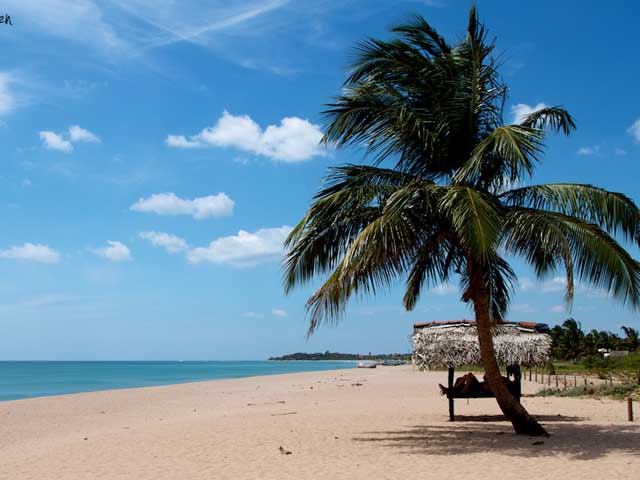
Trincomalee
Famous for its deep water natural harbour, which happens to be one of the largest in the world, Trincomalee has always been a strategic location since the European traders were trading across Asia. Situated on a peninsula on the north-east coast of Sri Lanka, this port city is often referred to simply as Trinco. Its beaches are renowned for their pristine quality and shallow water ideal for swimming. These beaches are sheltered by the bay and for over 100 meters, the water stretch is shallow enough for you to walk in to the ocean. The beaches provide a wide range of recreational activities such as swimming, bathing, surfing, scuba diving, fishing and even whale watching.
Trinco is home to some of the most beautiful beaches on the island such as Uppuveli and Nilaveli, and stunning corals at Pigeon Island, which is a marine national park situated on an island.
The city of Trincomalee is also a treasure trove worth discovering. It has the largest Dutch Fort in the country, Fort Federick. Originally, built by the Portugeuse from remnant of the demolished ancient Hindu Koneswaram temple, the structure was fortified by the Dutch in the 17th century. The temple has been restored on Swami Rock within the fort, and artifacts belonging to it that were discovered underwater or underground in the recent past have been returned. In the vicinity of Koneswaram Kovil, on the Swami Rock is a place called Lover’s Leap. It is a 350 foot drop that fascinates visitors due to the story behind its name – a British woman jumping off the spot after losing her lover. The ancient Kanniya hot springs dating back to the legendary King Ravana period are another popular attraction. The water in these springs is believed to have curative properties.
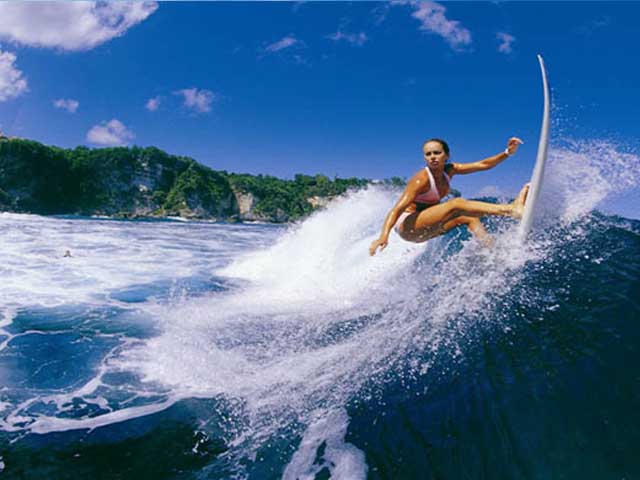
Arugambay
Arugam Bay is a unique and spectacular golden sandy beach on the East coast, located close to Pottuvil in the Ampara district. It is one of the best surfing spots in the world and hosts a number of international surfing competitions. While its reputation as a prime surfers’ paradise proceeds itself, Arugam Bay has plenty more to offer. This unspoiled fishing town has impressive coral reefs, an abundance of tropical fish, mangroves, jungles, lagoons, rivers, rice fields and sand dunes. When it comes to holidays here, you are spoilt for choices.
The main feature of Arugam Bay that attracts most of its visitors is its world-class surfing spots. The international surfing competitions hosted here draws surfers from all over the world. The surfing season in Arugam Bay begins in April and ends in October each year, which is when the best surfing waves occur.
There is something for every surfer, no matter the surfing level. If you are a beginner, you can find ‘friendly waves’ and for the more seasoned surfer, there are some excellent point breaks Due to its location, the area is dominated by right hand point breaks. Three of the most popular point breaks are ‘The Point’, ‘Pottuvil Point’ and ‘Crocodile Rock’.
Beyond the joys of surfing, Arugam Bay has an endless list of activities and attractions to offer, including lagoon tours, bird watching, elephant watching, national parks (Lahugalla and Kudumbigala), temples, ancient ruins and archaeological sites for nature, cultural and historical enthusiasts. Kumana National Park in the area is one of the most important bird nesting and breeding grounds in Sri Lanka. 255 species of birds have been recorded in the park, making it a splendid place to watch rare and migrating birds. Despite being a popular tourist spot, Arugam Bay has managed to preserve its natural beauty and charm.
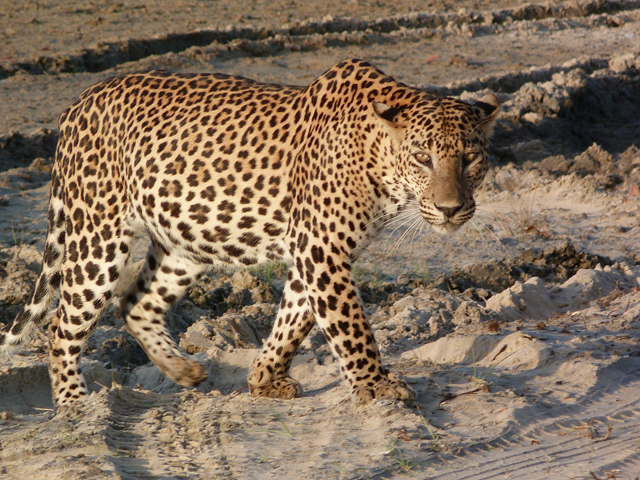
Wilpattu
In the northwest coast lowland dry zone is Sri Lanka’s largest national park. Wilpattu National Park is not only the largest in size but it is the oldest park on the island to receive national park status. The 130,000 hectare park is defined by a unique feature – it consists of nearly 60 natural lakes, as the name suggests (‘Willus’ meaning lakes). Although the leopard population in Wilpattu is unknown, the park is recognised as one of the top national parks in the world for spotting leopards. It is located just 30km from the historic city of Anuradhapura and 26km from Puttalam and Kalpitiya. The park is a great place for wildlife to sustain as the lakes provides plenty of water during the dry season.
Wilpattu is dotted with a variation of vegetation from dry zone scrub jungles to grassy plains. Like in almost every major national park, Asian elephants are seen here among a spectacular show of wildlife including the sloth bear, water buffalo, Sambhur, spotted deer, mongoose, wild boar and crocodile. The abundance of lakes has created a perfect wetland for aquatic birds and the park in general has an ample bird population. Endemic birds such as Sri Lanka Junglefowl, Babblers, Woodshrike, and Black-capped Bulbul are often spotted here. Wilpattu has an exquisite butterfly population to keep a lookout for, as well.
For nearly 15 years, the park was closed to visitors due to security reasons, and it was re-opened in 2003. It is one of the most tranquil and least-disturbed national parks in Sri Lanka. You have more than one reason to visit this monumental wildlife sanctuary, especially between February and October, when it is the most active. Jeep safaris are the best mode of sight-seeing in Wilpattu and the park is never heavily crowded. The rangers at Wilpattu guide the safaris and will make sure you have an informative and safe journey. For all nature lovers, wildlife photographers and nature enthusiasts, this serene wilderness has much to offer.
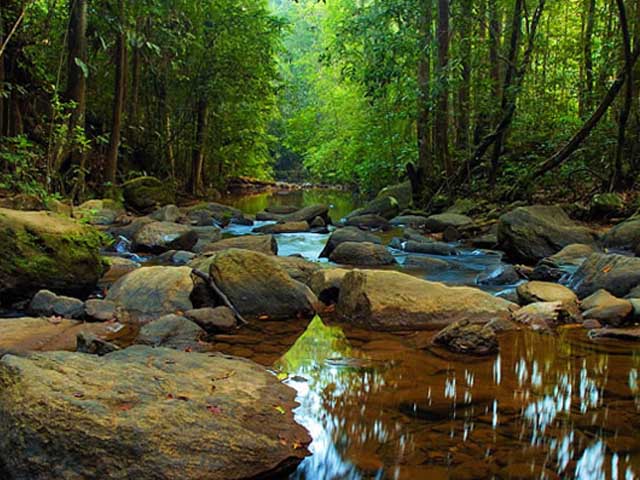
Sinharaja
Located in the heart of Sri Lanka’s wet zone in the southwest is the last remaining major virgin rainforest of the island, Sinharaja (the Lion King), designated a UNESCO World Heritage Site, a Biosphere Reserve and a National Park. It is a biodiversity hotspot and a sanctuary for endemic species from flora to fauna. Its dense vegetation covering 10,000 hectares is often shrouded by rainclouds, and plays a significant role in the island’s ecosystem. The only way to venture into this emerald paradise is by foot and with a guide. The evergreen forest is covered in lofty trees, thick canopies and some incredibly stunning wildlife. Sinharaja has a high level of endemism, and most plants, animals and trees found in the forest are endemic, making it an intriguing wildlife research spot.
Sinharaja is bordered by the Koskulana River in the north and the Gin Ganga River in the south. It is also surrounded by 22 villages, where locals are permitted to use forest land to sustain their living. They use the medicinal plants in the forest to make traditional medicine, palm trees to tap for jaggery and treacle, and bamboo and rattan to make baskets. The elevation of the reserve ranges from 200m to 1300m and an old foot track which runs past the Beverley Estate, marks the Eastern border. Visitors are sure to be thrilled by the sights and sounds of many species of birds, mammals, insects, reptiles, amphibians and butterflies that thrive in this precious reserve.
The apex predator of Sinharaja is the leopard and is the most elusive of the mammals in the forest. The rare Rusty Spotted cat and the Fishing cat can be seen here too. Common birds spotted are Layard’s parakeet, the Jungle fowl, the Spur fowl, the Ceylon wood pigeon, the Brown Capped Babbler and the Ceylon Blue magpie. The Purple-faced langurs are a common sight and they usually hang about in groups. Sambar, Barking deer and wild boar can be found on the forest floor and running along trees and branches are the Flame-striped Jungle squirrel, the Dusky-striped Jungle squirrel and the Western Giant squirrel. Porcupines and pangolins dart to and from the bushes and the occasional mongoose may also make a daytime appearance. Six species of bats are recorded in the forest along with 282 bird species. Among the reptiles and amphibians are the venomous Green Pit Viper, Hump-nosed Viper, the Krait, Greater Hourglass Tree Frog and the Wrinkled Frog. The wealth of wildlife in Sinharaja is vast and stunning and a visit to the wetlands of the island is not complete without trekking through this amazing rainforest.
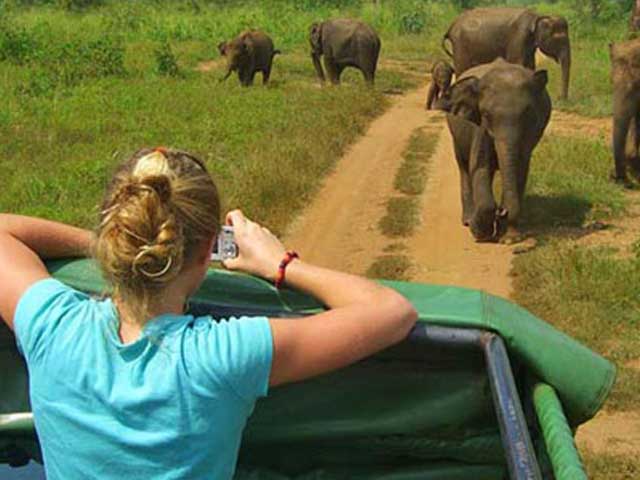
Udawalawe
On the boundaries of Sabaragamuwa and Uva provinces of Sri Lanka lies one of the best national parks in Sri Lanka for spotting the magnificent Asian elephant.
Udawalawe National Park is the island’s third most visited National Park, spanning over 30,000 hectares of dry and wet zone land. Udawalawe was created as a sanctuary for displaced animals during the construction of the Udawalawe Reservoir. It has become an important habitat for water birds and the Asian elephants.
There is an elephant population close to 350 in the area, and you can see them all-year round. The elephants are attracted to the park mainly due to the Udawalwe Reservoir, which provides them with plenty of water to feed, frolic and bathe.
The Udawalwe Elephant Transit Home functions as a safe haven for the abandoned elephant calves. The Transit Home looks after them until they are old enough to fend for themselves once released into the wild. Although elephants are the main attraction in the park, other wildlife too occupies its grounds.
The leopard, Fishing cat and the Rusty-spotted cat are the big cats of Udawalawe. The sloth bear, the Samba deer, Axis deer, Indian muntjac, Sri Lankan chevrotain, water buffalo, Mugger crocodiles, macaques and langurs are some of the other inhabitants you can look forward to seeing. The only way to explore the park is by jeep, and guided safaris in Udawalawe are a truly unique experience. If you are an avid birder, then you are in for a treat here, as it is a thriving breeding ground for 180 species of birds.
Five types of eagles namely, white-bellied sea eagle, crested serpent-eagle, grey-headed fish eagle, booted eagle, and changeable hawk-eagle are found here, among pelicans, kingfishers, painted storks, hornbills, spoonbills, and the Eurasian openbill. Endemic birds such as the Sri Lanka spurfowl, red-faced malkoha, Sri Lanka Grey hornbill, Brown-capped babbler, and Sri Lanka junglefowl too are abound the reserve.
The lack of dense vegetation and open grasslands make it easier for spotting wildlife in Udawalwe and the reservoir is a convenient place to watch herds of elephants bathing. The Walawe River and its tributaries surround the reservoir area, while forests and marshes make up the rest of the landscape.
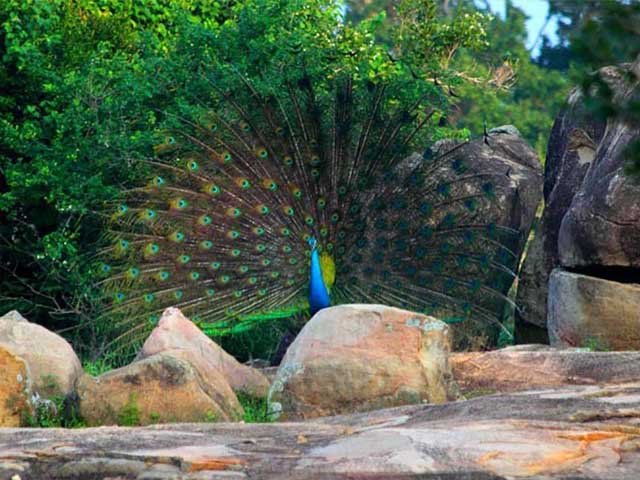
Yala
Yala National Park is the most visited national park in Sri Lanka and the second largest. It covers a whopping area of 1000sqkm and consists of a diverse landscape that includes monsoon forests, grasslands, flat plains, rocky outcrops, lakes, sandy beaches and marine wetlands. It also has adjoining parks that come together to create a vast ecosystem. The park is an important conservation area for the Sri Lankan leopard, elephant and aquatic birds. Yala has the highest leopard density in the world and is one of the 70 Important Bird Areas (IBAs) in Sri Lanka. It harbours 215 bird species and 44 mammal species. The area around Yala is culturally important too, as it has hosted ancient settlements and features two important pilgrim sites. There are six national parks and three wildlife sanctuaries in the vicinity of Yala.
Leopard spotting is one of the most popular activities of Yala and wildlife enthusiasts from all over the world descend upon the park during the peak season. Other animals including the Asian elephant, sloth bear, wild water buffalo, Toque macaque, Golden palm civet, Red slender loris, Sambar deer, spotted deer and the Fishing cat also occupy the park. Saltwater crocodile and the Mugger crocodile are often seen near lakes and rock pools, and at times you can spot turtles on the beaches. There are 130 bird species in Yala, while lagoons in the park provide the perfect environment for a large number of water birds.
Yala’s cultural importance has Hindu mythical roots. It is believed that King Ravana of Hinduism’s epic Ramayana had his legendary kingdom in Yala and it is now submerged in the sea. Ancient lakes, monasteries and temples are scattered throughout the park and attracts not just nature lovers but also pilgrims. The nearest town to Yala is Tissamaharama, the starting point of excursions and where the holy temple of Kataragama is accessible from. Bundala National Park near Tissamaharama is another wildlife reserve which is also a UNESCO Bio Reserve and an Important Bird Area.
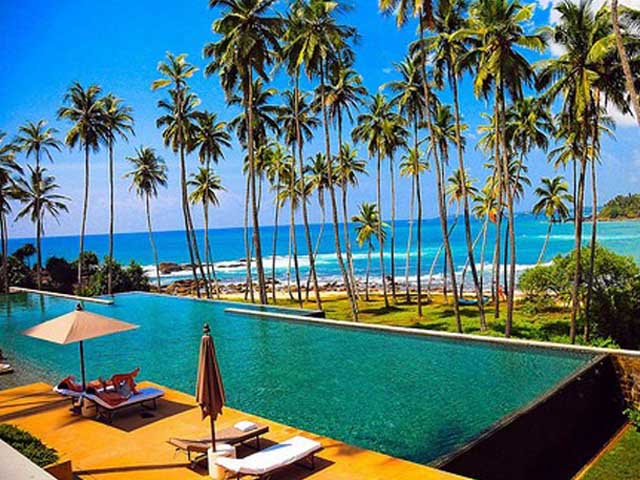
Tangalle
Located in the deep south of Sri Lanka and on one of the best bays on the island with a protected reef, Tagalle has been a popular port and a fishing town ever since the colonial times. If you are looking for a relaxed and quiet beach holiday, Tangalle ticks all the boxes.
East and West quarters of Tangalle offer some amazing coastal landscapes. West Tangalle has a series of magnificent natural bays that lie between rocky headlands and offer sea bathing. In some areas, it is even possible to wade out into the sea at waist height for 50 – 100 feet. East Tangalle consists of long sandy beaches, which are more suitable for peaceful sunbathing. If you are a lover of snorkeling, there are plenty of places to dive in and have loads of water fun. 10km east of the town is the Rekawa Turtle Conservation project.
Here at the beach you can watch five species of marine turtles: Green turtles, Loggerhead turtles, Leather0back turtles, Olive Ridley turtles and Hawksbill turtles lay their eggs in the sand nests at night. The project conducts a `turtle watch’ programme, which protects the nesting sites until the hatchlings return to the ocean.
The most popular day excursion in Tangalle is to the Mulkirigala rock temple. The temple perched on a boulder 200m high consists of natural caves with wall paintings and Buddha statues, and requires climbing via a series of rock steps. The view from the top of the rock temple is spectacular and well worth the climb. According to ancient inscriptions carved on the rock, Mulkirigala dates back almost 2,000 years when it was a site of a Buddhist monastery. The Kalametiya Bird Sanctuary in Tangalle is an area of coastal lagoons and mangroves creating a home to four nationally threatened birds and other bird species.
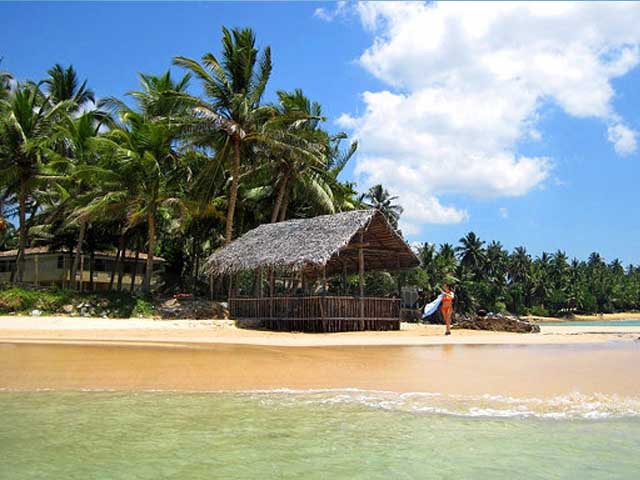
Mirissa
Known as Sri Lanka’s whale-watching hotspot, Mirissa is a picturesque fishing town, just a few minutes away from the main city Matara. Its crescent shaped sandy beach is surrounded by coves and palm trees, while the waters are perfect for a number of water sports. Mirissa is the largest fishing port on the south coast and is famed for its fresh tuna, mullet, snapper and butterfish.
Mirissa provides the best location in Sri Lanka for whale watching. November to April is the best season for whale watching, which is when these majestic creatures are crossing the southern tip of Sri Lanka, the Dondra Point. The peak season is from December to March, when the water off the coast is warm and calm, and perfect for migrating whales. Most sightings occur 3 – 6 miles off the coast, where you can witness the whales gracefully emerge from the water for air.
Mirissa is one of the top spots in the world for Sperm and Blue whales sightings, as they are frequently spotted here. In addition, you can spot pods of dolphins, such as Bottle-nose, Spinner and Risso’s dolphins, particularly during January and April. Whale and dolphin watching excursions occur usually at early morning, and can last from 3 – 5 hours.
Mirissa is also famous for its two popular surfing spots, a low power right-hander break over reef near the rocks and a left-hander break near the harbour. The spots here are similar to what you find at Arugam Bay and Unawatuna and are ideal for beginners and intermediate surfers. You can also go swimming, snorkeling and scuba diving in Mirissa, while deep sea fishing also tops the list.

Galle
Galle is the cream of the crop of Sri Lanka’s southern coast. Standing on a peninsula with a fine natural harbour that provided excellent defenses to the country, it is a culturally significant city that has earned the status of a UNESCO World Heritage Site. Galle’s most iconic landmark is the Galle Fort which was a stronghold built by the Portuguese in 1588 during their colonization and was later fortified by the Dutch in the 17th century and then occupied by the English. While a number of villas, mansions and buildings have been converted into hotels, cafes, museums and shops, the old-world charm of the era still lingers on.
Experience the Galle Fort with guided tours that give you an insight into its history, archeology and culture. Early morning and evening tours are recommended to avoid the strong heat during daytime.
Culinary tours in the Galle Fort are a wonderful way to learn about local cuisine in the region and to try out southern street food. Galle has some great sea food dishes you don’t want to miss trying out.
Other notable landmarks in Galle include the Galle International Cricket Stadium, the National Maritime Museum and St. Mary’s Cathedral. Galle Lighthouse, which is the oldest light station in Sri Lanka, is another prominent building in the area. Modern day Galle town is full of life, with bustling crowds and street vendors. Galle’s inland is a refreshing contrast of unspoilt jungle interior relatively unknown to tourists. There is much natural beauty and rural charm to discover in these quieter areas in countryside among paddy fields and green landscapes. A cycling tour is a great way to see this part of Galle. Another activity available near Galle is whale watching in Mirissa, the largest fishing port on the south coast.
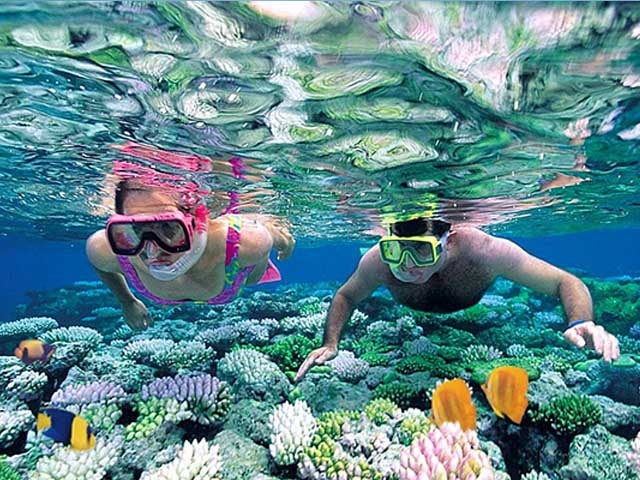
Hikkaduwa
Hikkaduwa is a small town on the ever popular southern coast of Sri Lanka and has earned its reputation as a water sporting hotspot. It is mostly famous for its coral sanctuary situated within the Hikkaduwa National Park, one of the two marine national parks in Sri Lanka. The park contains a fringing coral reef of high degree of biodiversity. The shallow reef is no more than 5 meters deep and runs out into the ocean straight out from the shore.
Scuba diving is the most popular sport in Hikkaduwa. The marine park stretches along the northern end of the beach and makes the ideal spot for scuba diving to get a glimpse of the undersea life. You can rent diving gear from places around the park. Hikkaduwa is also a fantastic place for snorkeling and deep sea diving. There is a reputed diving school with certified instructors who will accompany you on wreck dives and reef dives.
Waves here are also favourable for surfing for novices and experts alike. There are 3 to 4 surf points in Hikkaduwa area, consisting of left and right hand breaks. Although most of them are reef breaks, none of them are risky. All spots have a deep bottom and flat reef.
About 2km north of Hikkaduwa is the Seenigama Vihara, perched on its own island. A boat ride across the sea will take you to the temple. Many come here to perform certain rituals to seek retribution as they believe this is a place where justice is served by the god in charge of the temple. Nearby Hikkaduwa is a moonstone mine that allows visitors in. Moonstones have been mined in these forests for centuries and it is a great opportunity to see how these precious gems are mined, filtered and polished. Hikkaduwa Lake is another fascinating place to look around and makes a good spot for bird watching. The Dodanduwa lagoon is another point of interest and it is refreshingly pristine and beautiful.
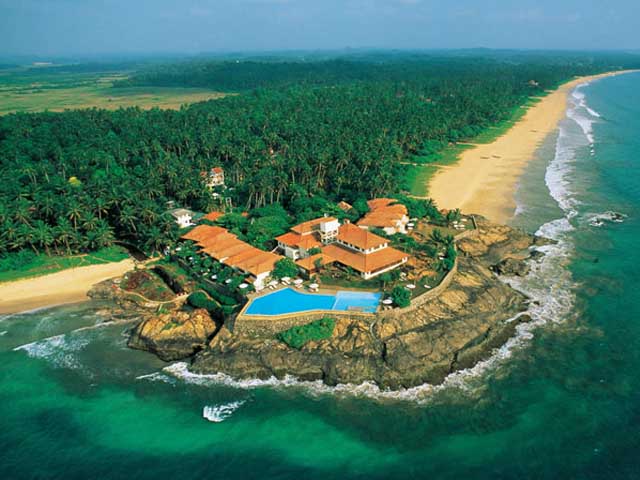
Bentota
Bentota is Sri Lanka’s most exotic beach and is situated on the Colombo-Galle coast, 65 km from Colombo. The area is dotted with luxury hotels and resorts due to its popularity as a tourist attraction. Between December- April conditions in Bentota are favorable for safe swimming, fun water sports and exciting excursions. Whether you are looking for a beach holiday to laze about in the sun on golden sands or to indulge in water sport activities, Bentota has much to offer. Not only it is blessed with a gorgeous beach, it also has a lagoon and a river, perfect for recreational water-based activities.
Water skiing, snorkeling, scuba diving, wind surfing, parasailing, fishing, wake boarding and canoeing are some of the exciting activities to do, while boat trips up the river and deep sea fishing trips are also available, depending on weather conditions.
You can also visit the architectural creations of the famous Bawa brothers. Geoffrey Bawa’s enchanting garden in Lunuganga and Bevis Bawa’s Brief Garden are hidden gems of the area and places of tranquility and beauty visitors must discover.
North of Bentota is another popular beach resort on the south coast, Beruwela. This beach is well-sheltered by palm groves and offers excellent water sports facilities. Other noteworthy sites here include the fishing harbour, lighthouse, Kachimalai Mosque and Galapata Temple. Induruwa, located south of Bentota is well known for its offshore reef which is perfect for safe swimming. This small fishing village stretches along a small creek and has pristine sandy beaches. About 11 km south of Bentota is the Kosgoda Turtle Hatchery, a community based turtle hatchery and turtle watching project set up by the Turtle Conservation Project. You can also take a leisurely trip to the Galapota Temple on the south bank of Bentota River. It is said that it dates back from the 12th century.
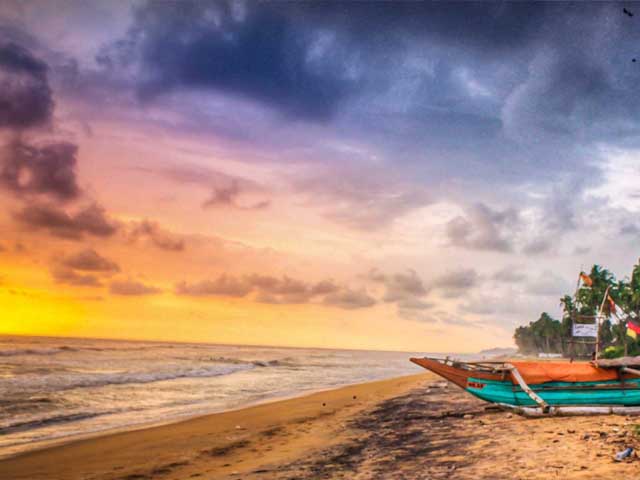
Wadduwa
Approximately 33Km south of Colombo on the western coast of Sri Lanka is the small town of Wadduwa. It is one of the best places in Sri Lanka to find beautiful, quiet beaches. Although the coastal line stretches only a few kilometers, the beaches are unspoiled and the town retains its natural beauty.
Wadduwa is a haven for those who are looking for a quiet getaway. Take a stroll on the beautiful beach while watching the catch of the day unloaded from boats, fishermen hauling their nets, toddy tappers climb the tall palm trees and walk the tight ropes from tree to tree. The sunsets here are truly remarkable and unrivaled, and you can watch them for hours sitting on the quiet beach without any distractions. There are several luxury resorts, Ayurveda spas and retreats available in Wadduwa. These make fantastic tropical hideaways away from the busy tourist destinations.
The laid back atmosphere of Wadduwa is highly suitable for a long relaxing beach holiday. Just few minutes south of Wadduwa is Kalutara, the main town of the district. There are several attractions here that are worth seeing. The Kalutara Bodiya is one of the famous Buddhist shrines in Sri Lanka. It is home to the Gangatilake Stupa, which is the only hollow dagoba in the world. You can enter the stupa’s interior and see beautiful murals inside that depict stories of Buddha’s life. Kalu Ganga River, which starts from Adam’s Peak and flows into the sea at Kalutara, is another attraction of the city. The river banks are a habitat ground for birds and plants, making it a canoeing spot for nature lovers. The town also has number of stalls along the way to buy handcrafts and local craft works. Kalutara also has some spectacular beaches like Calido beach, when you want to escape the bustle of the town.
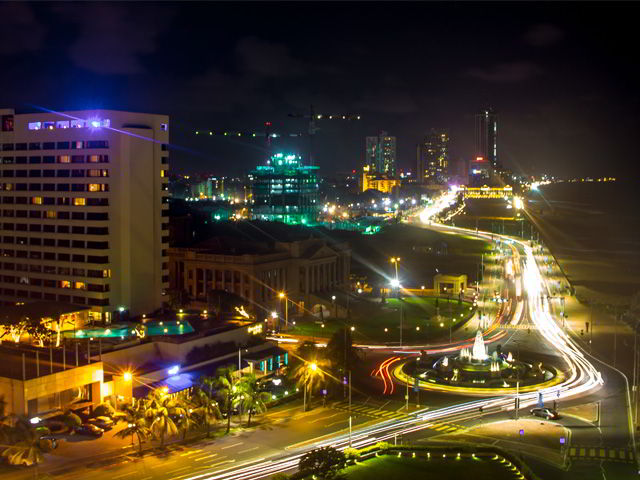
Colombo
The commercial capital of Sri Lanka is one of the most diverse and vibrant cities in Asia. The city combines the colonial influence from the past, the modern day cosmopolitan vibe and signs of different ethnic identities. There is much to discover in Colombo from culinary trails to shopping sprees. There are also places of interest to add to your sightseeing list.
Colombo is the best shopping destination in Sri Lanka offering you a wide variety of experiences. There are upmarket shopping outlets, sophisticated department stores such as Arcade Independence Square, Paradise Road, street markets and bazaars such as Pettah Markets, and everything in between. Sri Lankan cuisine in Colombo is a mixture of tastes and styles from different cultures in the country. The main cuisines revolve around delicious rice and curry. There are many restaurants offering a variety of gastronomical experiences from fine dining to everyday local and foreign food.
Colombo has some notable sights, which include colonial buildings, parks, museums, art galleries and religious sites. You have the opportunity to take part in cycling tours, art tours, open deck bus tours, walking tours and culinary demonstrations. Being a coastal city, Colombo also has many beachfront seafood restaurants. The beach at Mount Lavinia is a popular bathing spot and there are many bars, cafes and restaurants along the beach with a laid back nightlife. You can also go for a stroll on the Galle Face promenade which stretches half a kilometer along the Colombo coast. Other landmarks to visit will be the National Museum, Old City Hall, Dutch Museum and Viharamahadevi Park.
You will also find chic boutique hotels and Colonial styled luxury hotels in sprawling mansions from the British era. Colombo is a convenient stopping point on your way to down south and you must not miss the opportunity to discover what it has to offer.






